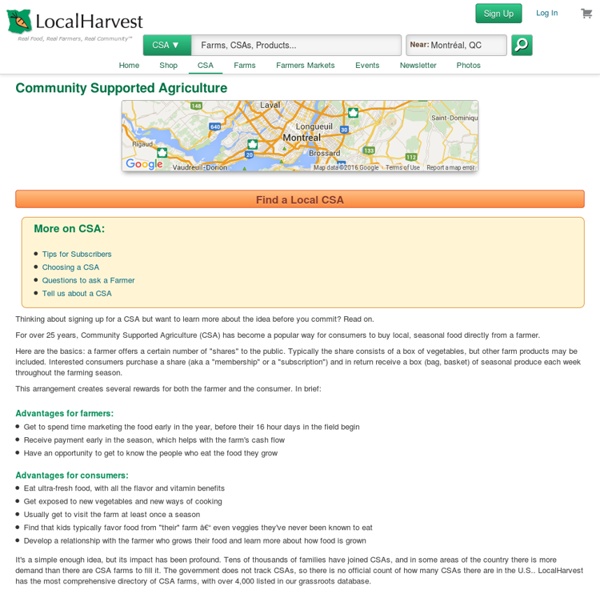Waste = Food
Man is the only creature that produces landfills. Natural resources are being depleted on a rapid scale while production and consumption are rising in nations like China and India. The waste production world wide is enormous and if we do not do anything we will soon have turned all our resources into one big messy landfill. But there is hope. The German chemist, Michael Braungart, and the American designer-architect William McDonough are fundamentally changing the way we produce and build. If waste would become food for the biosphere or the technosphere (all the technical products we make), production and consumption could become beneficial for the planet.
6 Easy Ways To Get A Jump On Next Year’s Garden
Fall is a wonderful time to look back at your summer garden and evaluate what worked and what didn’t. Reviewing your gardening success from season to season is one of the best ways to design your gardens for next year and beyond. We learn by doing, and you’ve just finished up an entire season of in-the-trenches, hands-on gardening experience. So, whether your gardening experience this past year was good or great, bad or ugly … there’s always something you can learn from it. We gardeners have a slogan we abide by: There’s always next year. Garden Successes … and Failures
5 Online Sources for Local, Organic Food Delivery
Dinner Series/CC BY 2.0 While ordering a box of fresh produce through a local farm in your Community Supported Agriculture (CSA) network is a fantastic way to have organic delivered, it's not the only option. Whether you don't have the space to grow your own fruits and vegetables, can't make it to your farmer's market's Saturday-morning-only hours, or are looking for more variety, these large-scale online organic grocery delivery services can fill the gap by sending organic, all-natural produce and products right to your door. You can't beat the convenience, but you should keep a few points in mind when you're ordering: Double check that the offerings are seasonal and local -- if you see bananas in your box in January in New York, you may be eating organic but you're not eating local; look for a service close to you to cut the shipping footprint; and be prepared to compare the prices and quality to what you could get on your weekly store trip. 1. Door to Door Organics
Aquaponics 4 You - Step-By-Step How To Build Your Own Aquaponics System
“Break-Through Organic Gardening Secret Grows You Up To 10 Times The Plants, In Half The Time, With Healthier Plants, While the "Fish" Do All the Work...” Imagine a Garden Where There's No More Weeds or Soil Pests, No Tilling or Cultivating, No Fertilizer Spreading or Compost Shredding, No Manure Spreading or Irrigating, and No Tractor Shed Required... And Yet... Your Plants Grow Abundantly, Taste Amazing, and Are Extremely Healthy. Here's How It Works:
Grow 100 lbs. Of Potatoes In 4 Square Feet: {How To
Quite the clever gardening tip here folks! Today’s feature includes tips from three different sources for growing potatoes vertically (in layers) instead of spread out in rows across your garden. If you have limited garden space or want to try some nifty gardening magic, this could be a great option for you.
Global Energy Efficiency Opportunities - Carnegie Moscow Center - Carnegie Endowment for International Peace
While energy efficiency measures will not end the serious global climate change challenge, adopting such measures would buy time to further the development of alternative low-carbon energy resources. White roofs can cool buildings, cities, and even the planet. Implemented worldwide, cooler cities could bring the world 5 percent closer to avoiding future climate disaster. 2011 Global Energy Prize recipient and Distinguished Scientist Emeritus at Lawrence Berkeley National Laboratory, Rosenfeld, spoke at Carnegie about the impact of the energy efficiency concepts around the world and the potential of white roofs to slow global warming.
Gardening Tips - 7 Habits of Successful Gardeners
Originally published January 2009 Or is it the Seven Pillars of Horticultural Wisdom? As everyone's resolutions remind us, we love attaching a number to advice, a number smaller than the one I regard as most realistic: The Twenty Three Thousand Four Hundred and Sixty-Two Things It's Important to Remember Before Getting Out of Bed.
Energy conservation
Energy conservation refers to reducing energy through using less of an energy service. Energy conservation differs from efficient energy use, which refers to using less energy for a constant service. For example, driving less is an example of energy conservation. Driving the same amount with a higher mileage vehicle is an example of energy efficiency.



